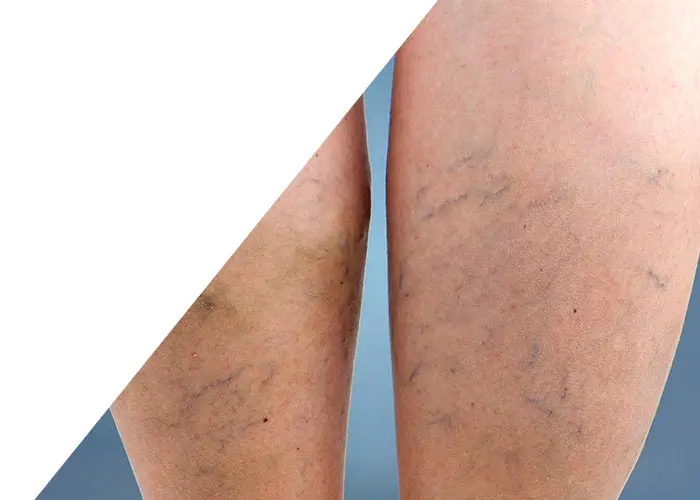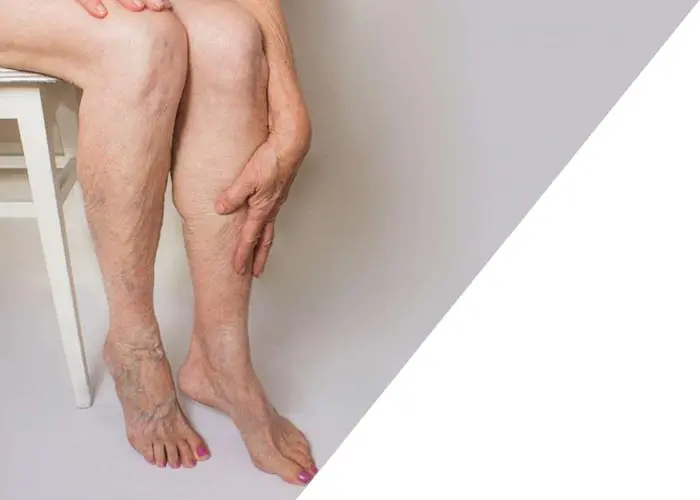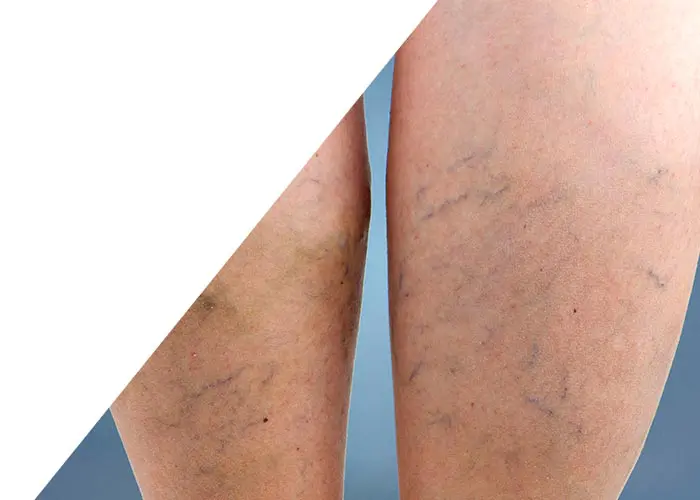Varicose Veins Treatment
If varicose veins and spider veins reduce your quality of life with uncomfortable symptoms such as pain and cramping, do not delay in making an appointment.

How are Varicose Veins Diagnosed?
The patient who applies to the physician with varicose veins complaints should first undergo a detailed physical examination.
However, evaluation is performed with Color Doppler Ultrasonography.
With this examination method, the veins’ structure, the varicose veins’ detection and the presence of clotting in the veins are examined.
The patient does not feel any pain or discomfort during this procedure.
In cases where the colour Doppler application is insufficient, a method called venography, which is used to visualise the veins by administering medication into the vein, can also be applied.


How are Varicose Veins Treated?
Varicose veins initially cause cosmetic problems. However, if left untreated, it can cause symptoms such as pain and numbness in the legs and even wound opening in the varicose area.
For this reason, patients with varicose veins must be under the control and treatment of a vascular surgeon. Treatment of varicose veins can be applied with surgical and non-surgical methods.
Treatment methods for varicose veins with non-surgical methods are as follows; Laser varicose vein treatment, Varicose vein treatment with radio frequency method, Foam treatment, Glue / adhesive treatment, and Sclerotherapy method.
Which method will be applied in treating varicose veins is decided after a detailed examination and detection of varicose veins.
How should varicose veins be treated?
Varicose veins treatment should be personalised. Treatment options have a wide range, from the classical surgical approach, which has been practised since ancient times, to laser, radiofrequency and biological bonding methods as a non-surgical approach.
During the treatment phase, a detailed history of the patient should be taken first. It should be learned in detail how and how long the complaints have been present.
It should be evaluated whether the patient has Hypertension, Rheumatic Disease, Diabetes, etc. Then a physical examination of the patient is performed.
After the examination, an evaluation with Doppler Ultrasonography should be performed for treatment planning.

What is Varicose Vein?
A varicose vein is a disease in the venous system when the veins cannot carry dirty blood to the heart. Varicose veins enlarge with dirty blood that cannot be transported, become visible from the outside in advanced stages and cause complaints such as pain, burning and swelling.
Who Suffers from Varicose Veins? What are the Risk Factors?
Varicose veins can be seen in everyone, regardless of male or female.
With the research conducted, it has been determined that half of the society has varicose veins problem. Varicose veins are more common;
- In women,
- During periods when hormonal balance changes, such as pregnancy and menopause,
- Overweight people,
- People who sit or stand for long periods,
- In older people,
- Those who have constipation problems,
- It is seen in people who prefer very tight clothes and high heels.
What are the symptoms of varicose veins?
The symptoms of varicose veins are that the leg veins are more visible and enlarged, there is pain, burning, swelling, and contraction in the legs and in advanced stages, wounds begin to form in the ankles.
Symptoms of varicose veins are complaints that reduce the quality of daily life of the person. Although these complaints vary from person to person depending on the location and degree of varicose veins, they can be listed as follows;
- Pain and cramps in the legs
- Feeling of Numbness
- Itching
- Vascular prominence
- Veins appearing green and purple through the skin
Varieties of Varicose Veins
There are 3 types of varicose veins determined according to the structure of the varicose
veins;
- Capillary Varices – Telangiectasias
- Medium varicose veins – Reticular veins
- Thick or internal varicose – Varicose veins
Causes of Varicose Veins
Causes of varicose veins;
- Genetic predisposition,
- Doing business standing up,
- Standing for long periods,
- Wearing tight clothes,
- Pregnancy
- Obesity
- Taking birth control pills.
Non-Surgical Varicose Veins Treatment Methods
Varicose Veins Treatment with Foam Sclerotherapy
It is generally applied to medium-sized veins. Varicose vein treatment with foam The foam given into the vein destroys the inside, allowing the vein to adhere and close.
The vein that has turned into varicose veins is closed. The vein closed by applying foam treatment cannot be reopened, and treatment is provided.
Varicose Veins Treatment with Sclerotherapy
Sclerotherapy is a treatment used to treat varicose veins and spider veins. After injection of the solution directly into the affected veins, the varicose veins shrink and disappear.
Although the sclerotherapy method may seem like a simple application, it is a serious procedure that should be performed by an experienced surgeon.
Before this procedure, it is of great importance that the vein map is mapped in detail, the general health status of the patient is checked and the correct vein is treated after the detection of the insufficient vein.
Capillary Varicose Veins Treatment with Radiofrequency Thermocoagulation
Thermocoagulation is performed with the TC3000, the most effective device in this field. The system uses a generator device that generates radio waves and needles transmitted to the tissue.
Radio waves are applied at a frequency of 4mhz and in pulses of adjustable duration. 0.075mm-0.15 mm thick needles have a special coating and are effective only with the tip when inserted.
The radio waves transmitted through the needles inserted into the skin cause the capillaries to coagulate through heat. In general, capillary varicose veins (telangiectasias) up to 0.9 mm, varicose veins smaller than 0.3 mm, varicose veins on the wrists, knees and face, and capillary varicose veins of any skin type can be treated effectively.
Without requiring special preparation or anaesthesia, the needle is inserted into the varicose veins under a magnifying glass at intervals of approximately 1 mm and pulses are made with the help of a pedal. Thus, the varicose area is treated by intermittent needle insertion.
The treatment is usually painless. An average session lasts 10-15 minutes, and during this time, 200-600 pulses are applied to the varicose area, and roughly 40-80 cm long capillary varicose veins are treated.
Varicose Veins Treatment with Laser and Radiofrequency Method
It is a highly advanced technology that enables the closure of the related vein by applying high heat with radiofrequency (RF) or laser into the varicose vein.
It is applied under ultrasound guidance. Although its superiority is accepted in the literature, it is preferred to the classical surgical approach. It does not require general anaesthesia or lumbar anaesthesia except in exceptional cases.
A needle is inserted into the vein without incision. The procedure is performed through a catheter. It is performed under local anaesthesia, and
procedures such as excision of the vessel are not performed.
There is mild pain after the procedure, and the patient can resume his/her normal life. As a result, it is a treatment method that minimises the risk of infection, pain and bleeding.
Varicose Veins Treatment with Glue Method
A catheter is inserted into the vein with ultrasound, then Glue is squeezed, and the vein is closed on itself.
This technique does not require general anaesthesia or local anaesthesia, and the patient can return to his/her routine life after the procedure.
It is less painful, and the possibility of infection and bleeding is almost negligible. The need for compression stockings after the procedure is short-lived.
Advantages of Non-Surgical Varicose Veins Treatment
- Social life can be resumed on the same day,
- No pain is felt during the procedure,
- No hospitalisation is required,
- No anaesthesia is required,
- The patient can walk immediately after the procedure,
- The recovery time is concise,
- The risk of reopening the closed vessel is minimal,
- No stitches, incisions or scars.
Causes of Varicose Veins
Causes of varicose veins;
- Genetic predisposition,
- Doing business standing up,
- Standing for long periods,
- Wearing tight clothes,
- Pregnancy
- Obesity
- Taking birth control pills.
Frequently Asked Questions About Varicose Veins Treatment
Is varicose vein treatment painful?
You will not feel any pain or soreness. Depending on the treatment applied, some different sensations may occur. Tiny needle pricks do not cause any pain. If necessary, local anaesthesia or painkillers can be injected.
How many days does varicose vein treatment heal?
The treated area may take 1-2 weeks to regain its former form. If the treatment is performed on the leg, this does not affect walking. There is no harm in continuing daily life.
What is the price of varicose vein treatment?
To determine the treatment price, our patient must be examined. The treatment is personalised, so to determine the treatment each patient needs, it is necessary to determine which type of varicose veins they have and give a clear answer.
What are the non-surgical treatment methods?
Sclerotherapy ,endovenous laser,glue and radiofrequency are non-surgical varicose vein treatment methods. It is popularly known as needle or foam treatment. With these methods, varicose veins are treated without incision scar or pain, and you can return to social life on the same day without needing hospitalisation.
How many sessions does varicose veins treatment take?
The treatment process is determined according to the size of the varicose area and the patient’s condition. Varicose veins treatment with radiofrequency, laser or biological adhesive, which are endovenous treatments, is usually treated in a single session, while sclerotherapy treatments are in sessions and vary according to the patient.
Are compression stockings effective in the treatment process?
Compression stockings regulate the pressure by suppressing the veins. With this application, the progression of varicose veins is prevented, and it is one of the important elements of the treatment.
Do varicose veins heal over time?
There is no spontaneous healing of varicose veins. A varicose vein is a disease caused by the deterioration of the veins and the valves in these veins, and definitive treatment is necessary.
What are the complications of varicose veins?
In varicose veins, the veins enlarge and become tortuous. As a result, blood flow slows down, and the possibility of blood clotting increases. Serious problems such as thrombophlebitis, deep vein thrombosis or pulmonary embolism can occur in patients with clot problems. At the same time, wounds in untreated and progressive varicose veins are defined as venous ulcers opening on the skin. The healing of these wounds can take place in a complicated and lengthy process.
About Dr. Onur ÜSTÜNEL
He was born in 1983 in Kütahya. After successfully completed his six-year medical education in Başkent University Faculty of Medicine, he graduated in 2007. Under the obligatory service, he started his career as a general practitioner in the Seyitömer Healthcare Center in Kütahya. He continued his specialization training at Hacettepe University Faculty of Medicine, Department of Cardiovascular Surgery following his success in the TUS exam (Specialty Exam in Medicine). Following the current developments in his field, Op. Dr. Onur Üstünel proceed in his career at the Department of Cardiovascular Surgery in University of Bologna School of Medicine Sant’Orsola-Malpighi Hospital together with the famous cardiovascular surgeons Prof. Dr. Roberta Di Bartalemeo and Prof. Dr. Davide Pacini. In 2014 and 2015, he continued his academic development by participating in the EACTS (European Association of Assosication of Cardiothoracic Surgery) vocational training courses in Windsor, England. After completing his specialty training, he worked in Siirt State Hospital as part of the obligatory service and then started to work at Ankara Numune Training and Research Hospital. Moving to İzmir in later years, Dr. Onur Üstünel continued his career in Bozyaka Training and Research Hospital. Finally, he started the operations and services of his department at Bornova Türkan Özilhan State Hospital. To offer a better quality and boutique service to his patients, he opened his own clinic here. He currently provide service to his patients in Alsancak. He is also a member of European Association of Cardiothoracic Surgery (EACTS), Turkish Society of Cardiovascular Surgery (TKDCD), National Society of Vascular Surgery and European Society for Vascular Surgery, and İzmir Chamber of Medicine. Onur Üstünel is interested in tennis as a hobby and is a member of İzmir Tennis Club.
